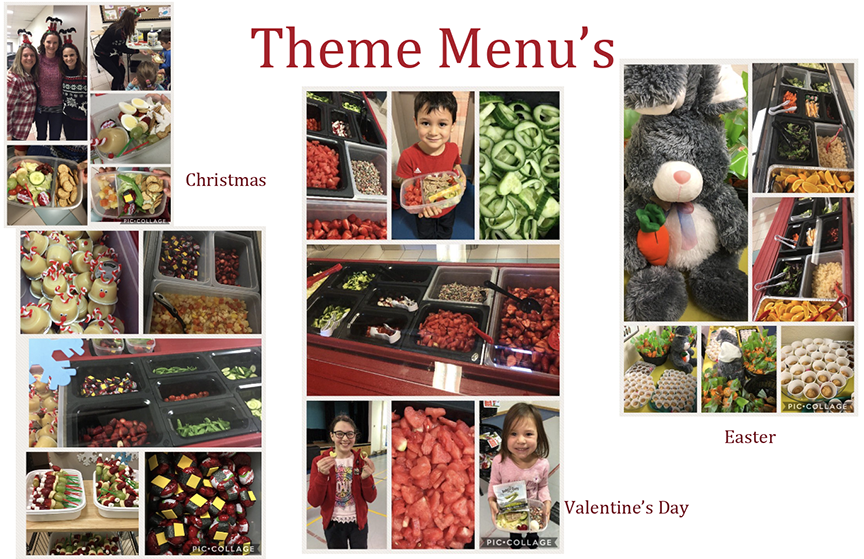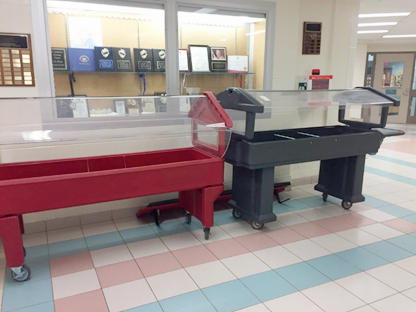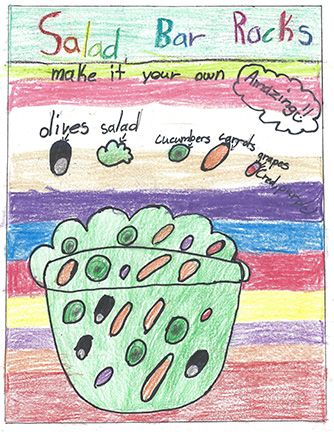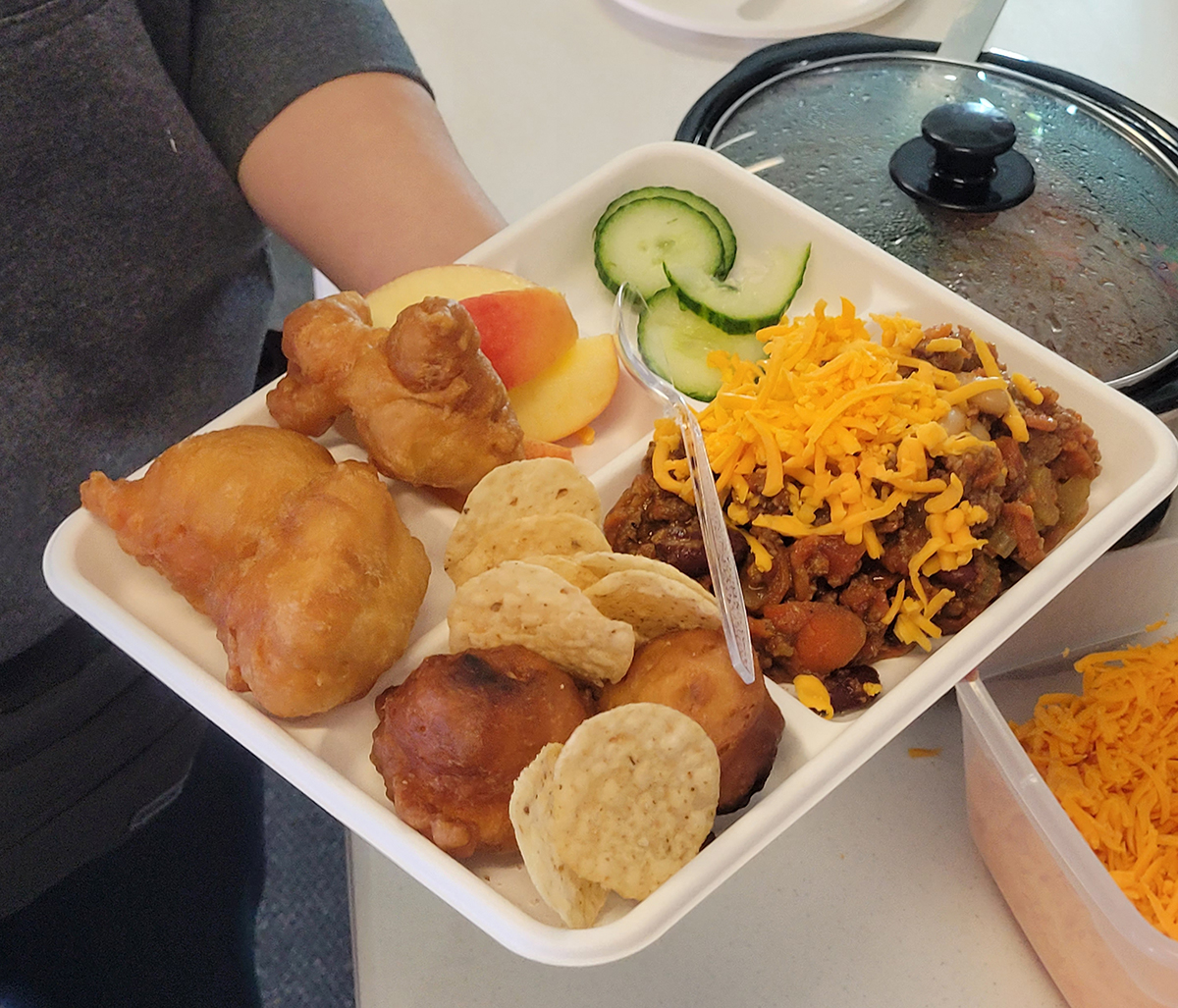St. Dominic Catholic Elementary School and St. Luke Catholic Elementary School, two of our Farm to School Canada Grant recipients located in Oakville, Ontario, have found great success in delivering their salad bar lunch programs through a business model launched by two parents, Stacey Bean and Jill O’Reilley.
To share how they’ve been able to serve up salad success in two schools and grow excitement for healthy food among many students, we connected with Stacey to learn about their program, what’s worked for them, and what they’ve learned along the way (all information is from pre-COVID times).
To understand their journey, let’s get some context on each school.
St. Dominic
a JK-Gr 8 elementary school
with a population of about 650 students,
received their $10,000 F2S Salad Bar Grant in 2016.
St. Luke
a JK-Gr 8 elementary school
with approximately 225 students,
received a $10,000 grant in 2018.
Both salad bar lunches are organized and run as paid weekly programs;
St Dominic’s salad day is on Wednesdays and St. Luke’s is on Thursdays.

How does it work?
- Families sign up and pay for the salad bar meals in advance ($5 per student per week). The program is sold in blocks of 8 or 12 weeks (depending where school holidays fall); most sessions are 12 weeks long.
 Participants also make a one-time $3 purchase of a logo’d reusable plastic salad container with two compartments, and a plastic fork & knife in the lid (these containers help to minimize food waste!); if a student forgets their container one day a paper plate and cutlery is provided
Participants also make a one-time $3 purchase of a logo’d reusable plastic salad container with two compartments, and a plastic fork & knife in the lid (these containers help to minimize food waste!); if a student forgets their container one day a paper plate and cutlery is provided- Selling the salad program in weekly blocks informs how much food is needed each week, without a fluctuation in student numbers. For instance, the preparation team will know they need 6 bags of chopped lettuce, 14 cucumbers, 5 lbs of baby carrots, and so on.
- Their salad carts always have lettuce, cucumber, tomato and carrots as a base, and then they build off that and pick three more vegetables, two to three fruits, one protein, and a grain (a gluten-free option is offered for about 10 students).
- Food is purchased from three main sources: Ontario Student Nutrition Services, Roseland Produce, and Snax 4 School. On the odd occasion, they’ve also purchased from Costco, the Wholesale Club, or direct from a supplier.
- All fresh food is ordered to arrive the day before salad day, and they stock up once a month on non-perishable items (grains, salad dressings, frozen proteins, etc.)
- The salad bar program often has a weekly theme, which they’ve found gets the students excited, eagerly asking in the hallway, “what’s the theme this week?!”
- Example themes for inspiration: taco salad (most popular), pizza salad (offering toppings you’d find on a pizza), Greek salad, Summer picnic, tailoring the menu toward a holiday in the month, and, the salad bar’s anniversary is always celebrated!

St. Dominic’s first lunch service ran for seven weeks, with 123 students and two teachers. By the first term of their third year, the program had grown to 240 students and 10 teachers. Here’s a term-by-term report of their growth:
- Year 1, term 1 (7 weeks) 123 students
- Year 1, term 2 (8 weeks) 132 students
- Year 2, term 1 (8 weeks) 172 students
- Year 2, term 2 (8 weeks) 178 students
- Year 2, term 3 (8 weeks) 195 students
- Year 3, term 1 (12 weeks) 235 students
Going forward, the team has decided to cap student enrolment at 200 to keep it manageable.

This program operates with four volunteers — two are responsible for the menu planning, sourcing and finances, and the other two come to the school on salad day and help with prep, service and clean-up. The school secretary helps as well by calling the classes down to the gym and helping to manage the line. St. Dominic’s program operates out of a storage room that they converted into a salad workroom (approx. 12′ x 12′ in size). They’ve added two fridges, two stainless steel prep tables, shelving, and a storage cabinet, with a sink nearby in a YMCA daycare room.
The main difference at St. Luke is that this school has a small galley kitchen with double sinks, a microwave, two fridges, and lots of cupboards for storage. A smaller population at St. Luke also sees a smaller salad bar program. In November 2018, they started with 47 students each week, and by April 2019 they were serving 68 students. This program operates with two volunteers at the cart, with the help of the secretary calling the students down to the cart by grade.




 We use Twitter & Instagram to advertise the salad program (
We use Twitter & Instagram to advertise the salad program (


[…] St. Dominic Catholic Elementary School and St. Luke Catholic Elementary School, two of F2CC’s Farm to School Canada Grant recipients, have found great success in delivering their salad bar lunch programs through a business model launched by two parents. Their case study looks at how they’ve made this work, and what they’ve learned along the way. Read the full case study here. […]